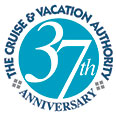The best way to see Cuba is on a cruise ship
By Carole Sovocool, NY Post
There may be a travel advisory in place for Americans visiting Cuba, but diehard cruisers aren't listening.
In fact when American-based cruise lines began service to Cuba last year, they were inundated with bookings from excited passengers all anxious to visit Havana before, well, the ships ruined it.
Time seems to have stood still in Cuba since John F. Kennedy's 1962 embargo, yet the 42,426-square-mile Caribbean nation (about the size of Florida) is beginning to embrace the tourist trade with entrepreneurial fervor. And a lot of visitors are ferried in by these giant vessels bearing insignia from Norwegian to Royal Caribbean, with most itineraries featuring at least one overnight stop, if not two, in Havana.
I took Carnival's five-night trip from Tampa, stopping off in Key West before plowing ahead 97 miles due south to the Cuban capital.
Luckily, the port is positioned in the heart of Habana Vieja (old Havana), so it's an easy walk into the bustling streets, lined with bars and paladares, which are family-run eateries that have been springing up across the city, serving classic Cuban dishes like ropa vieja, tender pulled braised beef served with fresh, local vegetables. Horse-drawn carriages, pedicabs and the nation's trademark vintage cars -- all imported before Fidel Castro took power in 1959 -- await.
While cruises are a natural choice for multi-generational trips because of endless amenities and food, all-inclusive pricing and planned-out destination-hopping, Cuba may not seem a natural choice. Yet Cubans, who are extremely friendly and open, have a family-centric culture that makes visiting a joy. Havana is also a living history lesson, with lots of Spanish architecture and iconic sites such as the Plaza de la Revolucion, one of the world's biggest squares, which is emblazoned with the wrought-iron visages of Castro and Che Guevara.
Once in port, there are plenty of cruise-organized excursions that explore the sights and sounds of Cuba, where kids can join local musicians and dancers as well as take part in various community projects. Some families brought along supplies to distribute to local schools.
Carnival runs five-, six- and eight-night Caribbean cruises from Miami and Tampa on the Carnival Paradise and Carnival Sensation with a stop at Havana (two nights on the eight-day cruise). Prices start at $309, plus a $75 visa fee, per person. Travel must include a -- people to people -- element, usually fulfilled with one of the excursions.
Little critters will especially love the wild suburb of Jaimanitas, now known as Fusterlandia after Cuban artist Jose Fuster, who created it. For the past 30 years, Fuster has spearheaded a Dr. Seuss-like makeover of 80 houses, which are now plastered with tile mosaics and sculptures. The area is effectively a walk-through community art project. Kids who would baulk at a formal gallery or museum can touch and explore the madcap pieces, while artisan shops sell souvenirs to visitors out of small storefronts, including mosaics of Cuban street scenes, hand-carved wooden bowls and arty interpretations of Che Guevara.
Note that Cuban venues don't accept American credit cards or dollars. Cuban Convertible Pesos (1 CUC = 1 US dollar) can be purchased at the cruise port, local banks or hotels, usually with a 3 percent fee. (There's an additional 10 percent tax on US dollars, so 13 percent, all told -- so maybe take any euros or Canadian bucks you have lying around instead?)
Families on our cruise were also keen to explore the nation's unique link to author Ernest Hemingway. (What middle-school student hasn't read "The Old Man and the Sea"?) From 1940, he lived there for 20 years, and has achieved cult status in Cuba as a result.
We drove to his house Finca Vigia (aka "lookout estate"), nestled in the hilly area of San Francisco de Paula 9 miles outside the city, in an immaculate 1956 Chevy Bel Air, courtesy of Old Car Tours (from $50).
For $5, literary buffs can explore the lush, tropical grounds and look through the doors and windows at the mounted antelope heads, old-school typewriter and still-stocked bar. Sadly, since it's under renovation, you can't go inside.
Instead, we stopped at a tiny local roadside bar nearby to try a Coctel Vigia -- the pineapple, rum and sugar cane drink that Hemingway invented (and yes, under-21s can get a virgin version). The ingredients are crushed through an old-fashioned, crank-operated wringer, which customers are encouraged to churn -- turns out it's something of a workout, but the result is delicious.
Even though it's crowded, Havana is safe to explore without a guide. In the evening, the scene makes for lively strolling. For tired little ones, the pedicabs make for a fun mode of transport and cost the equivalent of a few dollars. The paladares' tables spill onto the winding cobble stoned streets, and live Latin music fills the warm night air.
Oh, and the Cuban rum mojitos are delicious, plentiful and cheap. What more could you want?

With each issue of Ultimate Experiences Online, you’ll enjoy a collection of articles, slideshows and videos that we will inspire you to make your travel dreams a reality.

To help you discover ways to explore the world, we're pleased to share our The Travel Magazine Online.
 Save money and escape the crowds. Hot Deals and multi-port packages. Savings of up to 50%!
Save money and escape the crowds. Hot Deals and multi-port packages. Savings of up to 50%!

Our free app that allows you to carry all of the destination information you need while traveling, right in your pocket!

We recommend optional travel insurance that protects you in the event of having to cancel your trip avoiding travel vendor cancellation policies and more!





